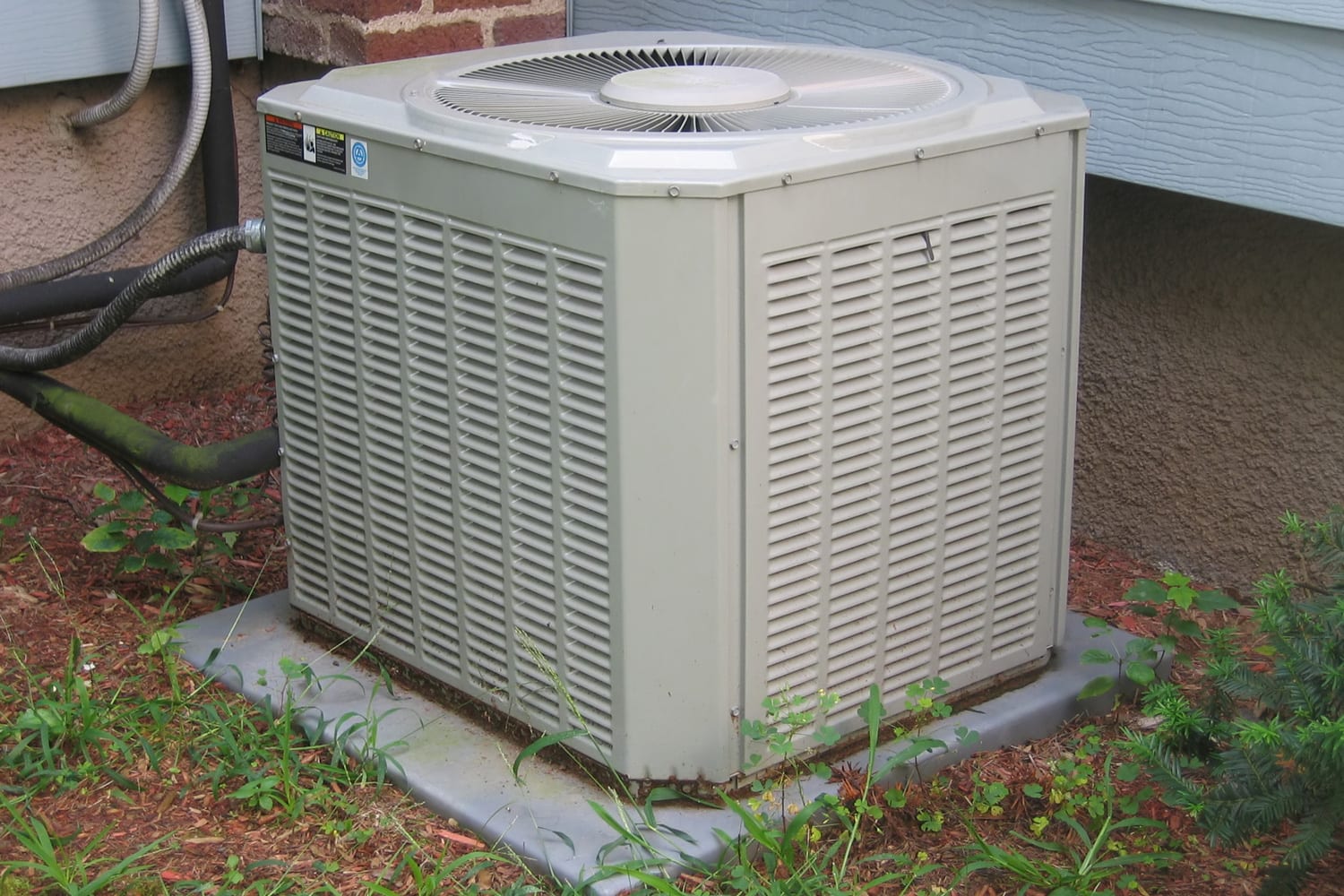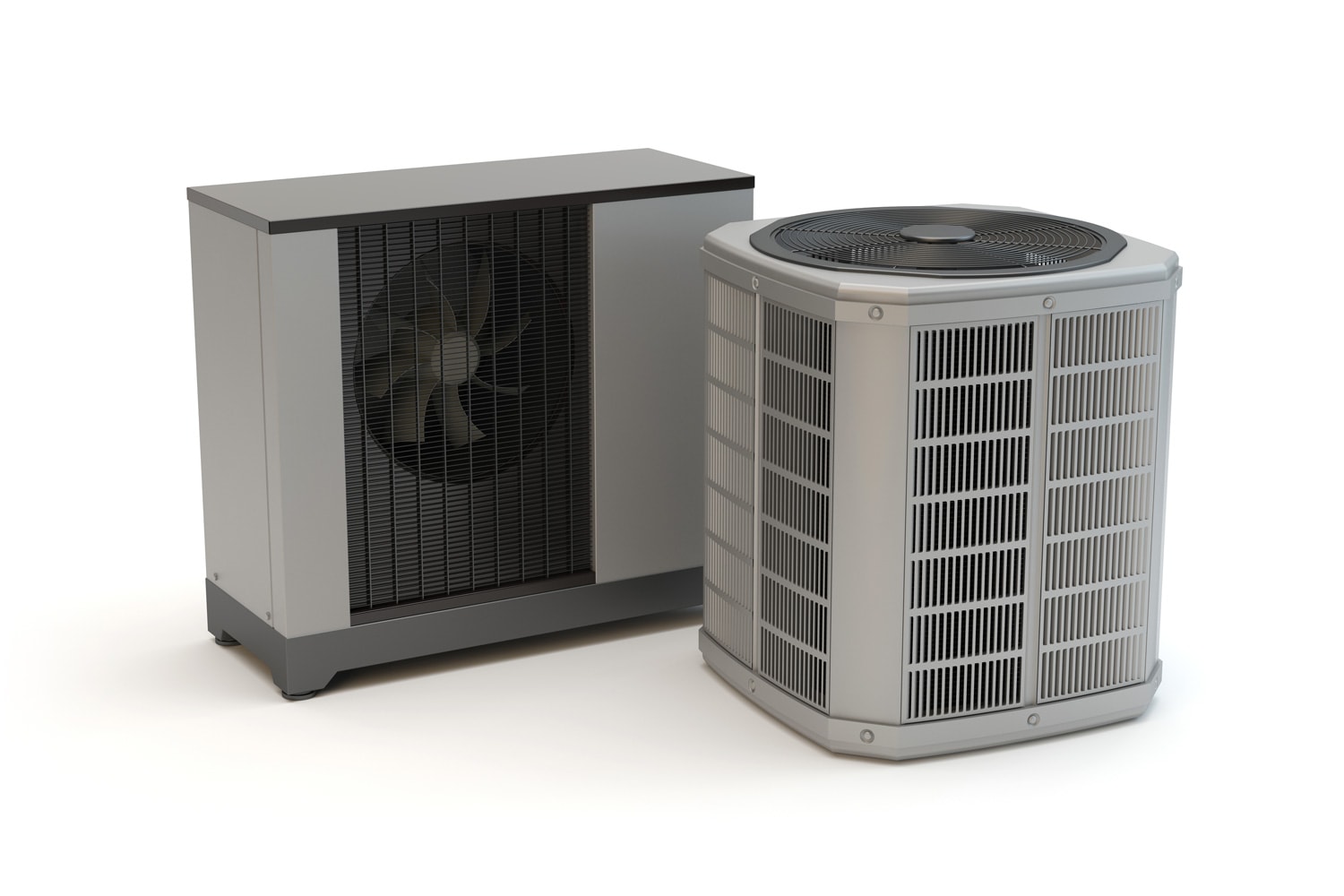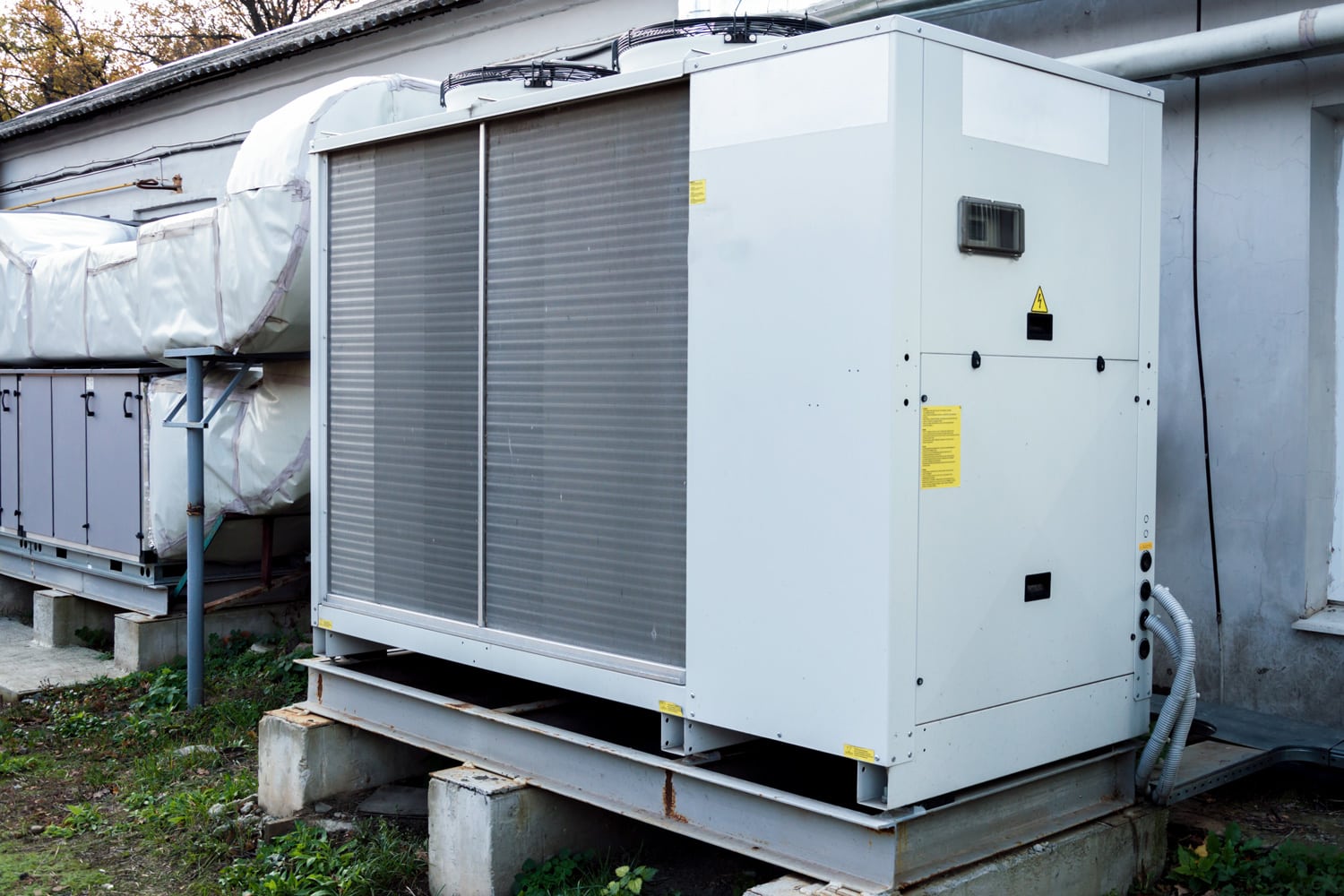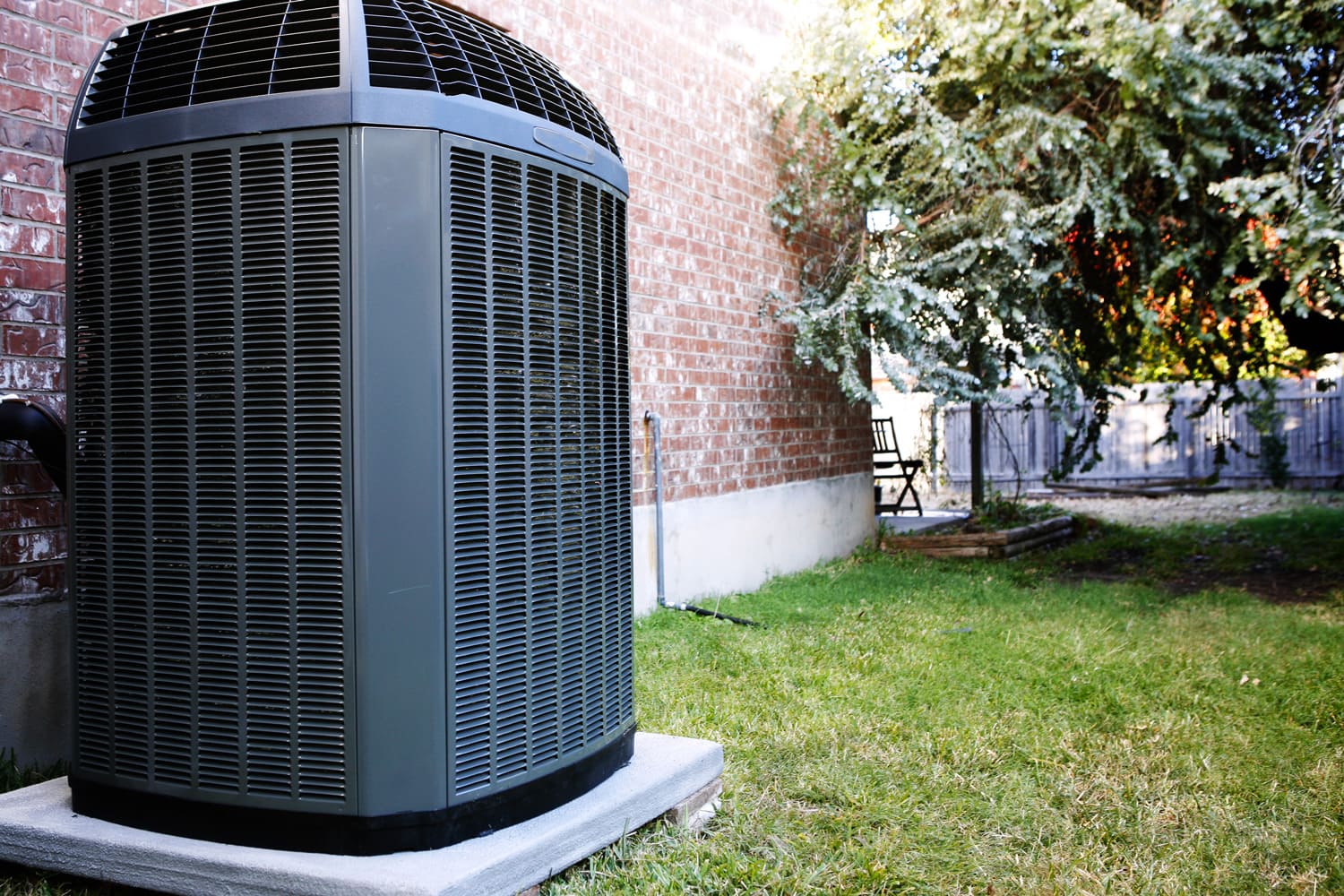Installing a central air conditioner without existing ductwork can be an extensive project. Before you call the HVAC contractor, as always, it’s a good idea to know how much it costs. We’ve researched to help you get the answer and here’s our finding.
The cost of central air installation ranges anywhere between $5,000 to $12,000, with most homeowners paying a little over $7,000 for a 16 SEER unit with new ductwork.
Below, we break down the major factors that determine the central air installation price, as well as the other important considerations to make when getting a central air conditioner.

Do You Really Need Ductwork To Install Central Air Conditioner?
Unlike a typical air conditioner that relies on an evaporator to blow cold air, the central air conditioner supplies and distributes air using ductwork. Therefore, the latter simply is necessary for it to operate.
The Cost Of Installing a Central Air Conditioner

Typically, the installation costs $4,800 for smaller units and $7,000 for larger systems. The price goes down with existing ductwork. The factors below can also influence the price tag:
- Home Size: A properly sized central air conditioner provides a greater ability to cool your space. The bigger your house, the bigger the air conditioner you need- the higher the price.
- Ductwork Location: Depending on the ductwork location (basement, within walls, or attic) extra tools and accessories might be utilized- that can drive the cost as well.
- System Type: Other system types are equipped with extra features and accessories which come at a price.
- Temperature Control Zones: This feature allows homeowners to control the temperature in different rooms; it has an added charge.
- Number of Vents: The more vents your house needs, the more ducts it requires, which can increase the installation fee.
- Duct Materials: The material used for the ductwork (sheet metal, fiberboard, and wire coal) can affect the number.
Types of central air conditioners
Split AC
This makes the best choice if you only to add an air conditioner to your existing furnace and ductwork. Once connected to your air handler and duct, you’re all set! With the two main components, evaporator and fan, sitting outdoor, this system is relatively quiet.
Packaged AC
This is a single unit located outside. That said, it takes up less space, making it ideal for houses with limited space. The only downside is it requires more maintenance and the repair is usually expensive.
HVAC Package Unit
This comprises all the components of an HVAC, furnace, and air conditioner, in one package. You can switch between cooling and heating systems with ease.
The Best Central Air Conditioner Brands

1. Goodman
Goodman central air conditioners might not be loaded with high-tech features but it's reliable and efficient. They are made of durable materials and the SEER rating starts at 13. The best thing is they come at a low price and are ready to use.
2. Lennox
When it comes to SEER rating or energy efficiency, Lennox central air conditioners have the upper hand. With an unmatched 28 SEER rating, it can significantly lower your energy bill! No doubt, they are premium products, but the price is not a problem. Lennox has three tiers, you choose whichever suits your budget.
3. Trane
Trane are conditioners are equipped with advanced cooling technology and features to provide a precise temperature. However, they are more expensive than other brands.
4. Amana
Amana air conditioners come with modern, powerful features. We can say that their latest technology and efficiency can make up for the high installation cost.
5. Carrier
Carrier central air conditioners are known for their silencer system that operates at 51 decibels! You can sleep sound at night! By far, this is one of the quietest central air conditioners.
SEER Ratings For Central Air Conditioners
SEER or Seasonal Energy Efficiency Ratio measures the air conditioner's efficiency. It's calculated by dividing the total BTU by the number of watts. The higher the unit rating, the better.
- 13 to 15 SEER are recommended for those located in colder climates and only plan to use the air conditioning on the hottest days.
- 16 to 18 SEER: these make an ideal choice for those who reside in slightly warmer areas, or have higher AC demand.
- 19 to 21 SEER: units with a rating this high are best for extreme climates and larger homes with many occupants. They have high upfront, but the lower electricity bill can offset it.
- 22 to 24 SEER are specifically designed for commercial spaces that run AC for an extended period of time.
Can You Have A Ductless Central Air Conditioner?
Is the idea of getting ductwork sounds like a lot of hard work? Or is ductwork too huge to fit in your house? You may opt for a mini-split ductless system. This is basically a traditional central air conditioner but without ductwork.
You can install up to four units in different areas of your house. Then you can adjust the temperature levels individually.
Check out this item on Amazon.
Pros And Cons Of Mini Split Ductless AC System
There are advantages and disadvantages of mini-split ductless systems. Determine if this AC system works for you.
Pros
- Small size: This system is relatively small. It’s less than one ton and only two feet high.
- Ductless: You don’t need to mess with your wall just to install a duct.
- Ventless: It doesn’t produce fumes and only circulates indoor air.
- Individual thermostat: Each unit comes with a thermostat, allowing you to control the temperature in each zone at different levels.
- Air filter: It can trap dust and pollutants to purify the air.
- Quiet: The mini-split ductless system operates at 32 decibels, making it the quietest air conditioner on the market.
- Low energy consumption: Due to its ductless system, it consumes less energy.
Cons
- Expensive: The installation costs is around $1,000 to $ 2,000 per ton.
- Drainage issues: Sometimes the small amount of water collected doesn’t evaporate, so it has to be drained from time to time.
- Indoor units: Some homeowners dislike the idea of having indoor air handlers.
The Long Run
The initial price tag might be 30% higher than a traditional central air conditioner, but this new technology can save you the trouble of breaking through the wall just to install ductwork. Also, it can cut your energy consumption by 30%. Not to forget that it allows you to control the temperature levels in different zones as desired.
Central Air vs Mini-Split: Which Is better?

When it comes to air conditioning systems, no one size fits all. It will all go down to the individual home need in terms of comfort, temperature, quietness, and so on. Basically, the best choice is the one that meets all your demands.
To say the least, the mini-split ductless system makes the best choice for smaller homes that don’t have enough storage for ductworks, while traditional central is ideal for larger homes that require consistent cooling systems.
Ways To Save On Central Air Installation Cost
Central installation is pricey, but these simple tips can cut down your initial cost.
Right Timing
HVAC contractors are busy during summer and winter. So scheduling a central air conditioner installation during those times yields a higher price and longer turnaround time. It’s better if you get a schedule in the off-season.
Different estimates
Get quotes from three different HVAC contractors, to get the best deal for installing a central air conditioner.
What To Look For In A Central Air Conditioner Contractor
The installation quality can affect the performance of the system. Hiring a contractor who knows what they are doing is crucial. See factors to look for in a contractor:
Licensing
This is proof that the contractor or installer passed the experience and trade exam required to operate.
NATE Certification
Contractors with NATE certification have undergone additional training, making them more knowledgeable in HVAC system installation.
Insurance
You would want to work with an insured contractor who can cover the replacement in any case they damage your unit.
Factory Authorization
Factory-authorized contractors are licensed, NATE certified and insured. They’ve most likely been around for a long time, you can count on them to service your central air conditioner without a problem.
Good Reviews
Read the company reviews on Yelp to gain insight into how they operate and the quality of service they provide.
Conclusion

On average, you can expect to pay $5,000 to $12,000 to install a central air conditioner without existing ductwork. If getting ductwork isn’t applicable to your home, you can opt for a mini-split ductless system.
If you liked this post, you might also like:

